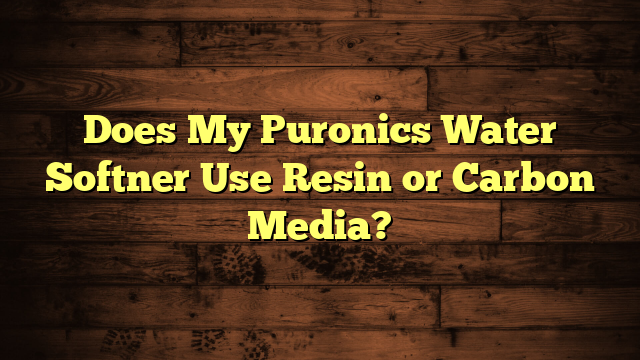Can You Run Water Softner Backwash in Septic?
You might be wondering if running water softener backwash into your septic system is a viable option. While it may seem convenient, this practice can actually pose significant risks to your system's functionality and overall health. The introduction of excess solids and chemicals can disrupt the essential bacteria that treat wastewater, leading to clogs and unpleasant odors. So, what are the best alternatives to handle backwash effectively? Exploring this topic could save you from costly repairs and maintenance down the line.
Key Takeaways
- Discharging water softener backwash directly into a septic system can disrupt the beneficial bacteria balance essential for effective wastewater treatment.
- Backwash can introduce extra solids, potentially causing clogs and reducing the efficiency of the septic system.
- High salt levels from backwash can harm the drain field's soil and lead to increased sludge accumulation in the septic tank.
- It's advisable to consult local experts or professionals for compatible disposal methods rather than using the septic system for backwash.
- Alternatives for backwash disposal include using a dedicated dry well, leach field, or holding tank for responsible management.
Understanding Water Softener Backwash
Understanding water softener backwash is vital if you want to maintain your system effectively. Backwash is the process that cleans and regenerates your water softener, allowing it to function at its best.
There are different water softener types, each with its unique backwashing mechanism. For instance, traditional ion exchange systems typically require more frequent backwashing compared to newer models, which may use advanced technology to minimize the need.
When it comes to backwash frequency, it's important to follow the manufacturer's recommendations. Generally, you'll want to backwash your system every few weeks, but this can vary based on your water quality and usage.
If you notice your water softener struggling to produce soft water or if it's running continuously, it might be time to adjust the backwash schedule.
Regularly monitoring your system not only prolongs its lifespan but also guarantees that you're getting the best water quality possible.
Keep in mind that neglecting backwash can lead to mineral buildup, which can reduce efficiency and increase your overall water expenses.
How Septic Systems Work
Septic systems play an essential role in managing household wastewater, and understanding their components can help you maintain them effectively.
At their core, these systems consist of a septic tank and a drain field, which work together to treat and disperse waste.
Septic System Components
A well-functioning septic system relies on several key components that work together to treat and dispose of household wastewater. The heart of the system is the septic tank, where solids settle at the bottom, and scum floats to the top. Regular septic tank maintenance is essential; neglecting it can lead to backups and costly repairs.
Next, there's the drainage field, designed to distribute the treated effluent into the soil. Its layout is imperative; proper drainage field design guarantees that the effluent is absorbed efficiently, preventing contamination of groundwater. This area should be kept clear of heavy machinery or deep-rooted plants, as they can disrupt the system's function.
Additional components, like distribution boxes and vent pipes, also play significant roles in guaranteeing that wastewater is treated effectively. Each part must work in harmony for the system to operate smoothly.
Understanding these components helps you appreciate the significance of maintaining your septic system, ultimately contributing to its longevity and efficiency. By keeping an eye on the tank and understanding the design of your drainage field, you can help prevent potential issues and guarantee your system continues to function as intended.
Wastewater Treatment Process
When wastewater enters the septic system, it undergoes a multi-step treatment process that separates solids from liquids and purifies the effluent. First, it settles in the septic tank, where heavier solids sink to the bottom, forming sludge, while lighter materials, like grease, float to the top as scum. This separation is vital for effective wastewater recycling, as it prevents solids from clogging the drain field.
Next, the liquid effluent flows into the drain field, where treatment technologies, such as soil filtration, further purify the water. As the effluent seeps through the soil, microorganisms break down harmful pathogens and nutrients, guaranteeing the water is safe to return to the environment.
It's essential to maintain your septic system to guarantee it operates efficiently. Regular pumping of the tank prevents the buildup of solids, extending the system's lifespan.
If you're considering running water softener backwash through your septic system, remember that high salt concentrations can disrupt this delicate treatment process, leading to potential issues. Always consult a professional to safeguard your septic system's health and effectiveness.
The Impact of Salt on Septic
Using salt in water softeners can considerably impact your septic system's performance. When you introduce salt into your septic tank, you risk increasing salt toxicity, which can negatively affect septic health. High salt levels can disrupt the delicate balance of bacteria essential for breaking down waste.
The table below summarizes the effects of salt on your septic system:
| Impact | Description |
|---|---|
| Bacterial Disruption | Salt can kill beneficial bacteria in your septic tank. |
| Sludge Buildup | Increased salt may lead to more sludge accumulation. |
| Drainfield Damage | High salinity can harm your drainfield's soil. |
| System Efficiency | Elevated salt levels can reduce overall system performance. |
To maintain a healthy septic system, it's vital to monitor the amount of salt entering your tank. Consider alternative water softening methods, like potassium-based products, to lessen the potential harm. By taking these precautions, you can help protect your septic system and guarantee its longevity. Always keep in mind that a well-functioning septic system contributes to your home's overall health and safety.
Risks of Backwashing Into Septic
Backwashing your water softener directly into a septic system can pose significant risks. When you dispose of backwash improperly, you might face issues that compromise your septic system's performance. Here are some concerns you should consider:
- Risks of contamination: Backwash contains salt and chemicals that can disrupt the natural bacteria in your septic tank, leading to system failure.
- Increased solids: The backwash can introduce extra solids, causing clogs and backups, which are costly to repair.
- Reduced efficiency: A septic system's efficiency can decline when it's overloaded with foreign substances, making it less effective at treating wastewater.
- Potential for odors: Improper backwash disposal can create unpleasant smells, affecting your home's environment.
- Environmental impact: Contaminated wastewater can seep into the groundwater, posing risks to local ecosystems and drinking water supplies.
Understanding these risks helps you realize why proper backwash disposal is vital. Instead of backwashing into your septic system, consider alternative disposal methods that protect your home and the environment.
Keeping your septic system functioning well is essential for your household's health and safety.
Local Regulations and Guidelines
Local regulations and guidelines play a significant role in managing how you dispose of backwash from your water softener. Before you make any decisions, it's essential to check the specific septic guidelines in your area. Many local authorities have rules about what can and can't go into a septic system, and these rules often vary from one region to another.
In some places, the high sodium content found in water softener backwash can disrupt the natural bacterial balance within your septic tank, leading to costly repairs. You'll want to consult your local health department or environmental agency to understand the regulations that apply to your situation. They can provide you with the necessary information on acceptable disposal practices.
If your regulations prohibit running backwash into your septic system, don't worry—there are alternative disposal options available. You might consider connecting your water softener to a dedicated drain or utilizing a separate holding tank.
Ultimately, keeping your septic system healthy is a priority, and adhering to local regulations guarantees that you're doing your part to protect it. Remember, staying informed is key to making the right decisions for your home and the environment.
Best Practices for Water Softener Use
To get the most out of your water softener, it's crucial to follow some best practices.
Start by using proper disposal methods for the backwash, ensuring it doesn't harm your septic system.
Regular system maintenance and being aware of the environmental impact can help you maintain efficiency and protect the ecosystem.
Proper Disposal Methods
When it comes to disposing of water softener backwash, following proper methods is vital for protecting your septic system and the environment. Safe practices for disposal won't only guarantee your system functions efficiently but also minimize negative impacts on groundwater.
Here are some best practices to take into account:
- Consult a Professional: Always seek advice from a local expert familiar with septic systems and water softeners.
- Discharge to a Dry Well: If possible, direct backwash to a dry well or a dedicated area that can absorb excess water.
- Avoid Discharging to the Septic Tank: Never send backwash directly into your septic tank; it can disrupt the delicate balance of bacteria important for waste breakdown.
- Use the Right Salt: Choose water softening salts that are low in impurities, reducing harmful substances in your backwash.
- Monitor Your System: Regularly check your septic system's health to catch any issues early and confirm it's working properly.
System Maintenance Tips
Maintaining your water softener is essential for guaranteeing its longevity and efficiency. Regular system upkeep not only enhances performance but also helps avoid costly repairs.
First, check the salt levels in your brine tank monthly and refill as needed. Using the right type of salt—either sodium chloride or potassium chloride—can make a significant difference in your softener's effectiveness.
Next, establish a maintenance schedule for cleaning the resin bed and inspecting the unit for any signs of wear or leakage. This proactive approach can uncover small issues before they escalate into major problems.
Furthermore, consider flushing the system periodically to prevent the buildup of minerals and guarantee ideal water flow.
Don't forget to monitor the settings on your softener. Adjusting the regeneration frequency based on your water usage can optimize salt consumption and save you money. If your water quality changes, revisit your settings to adapt accordingly.
Finally, always consult your manufacturer's guidelines for specific maintenance tips tailored to your model.
Environmental Impact Awareness
Being mindful of the environmental impact of your water softener can enhance both its efficiency and sustainability.
You're not just improving your household water quality; you're also contributing to ecosystem preservation.
Here are some best practices to keep in mind:
- Choose eco-friendly salt: Opt for solar salt or potassium chloride to reduce chemical runoff.
- Monitor water usage: Regularly check your water softener settings to minimize unnecessary backwashing.
- Use a demand-initiated regeneration (DIR) system: This system regenerates only when needed, saving water and salt.
- Recycle and dispose of brine responsibly: If your area allows, consider discharging brine in a way that protects your septic system and the environment.
- Schedule regular maintenance: Confirm your system operates efficiently and doesn't waste resources.
Alternatives to Direct Backwash
Direct backwash of a water softener can pose challenges for septic systems, prompting the need for alternative solutions. Instead of directing the backwash straight into your septic tank, consider alternative disposal methods.
One effective option is to use a dedicated dry well or leach field. This allows the backwash water to disperse into the ground, minimizing the impact on your septic system.
Another solution is to implement backwash filtration systems. These systems can help filter out the harmful particles and salts from the backwash before it reaches your septic system. This reduces the load on your septic tank, helping it function more efficiently.
You might also explore capturing the backwash in a holding tank and using it for irrigation. This method not only provides an alternative disposal route but also conserves water, making it an environmentally friendly option.
Consulting With Professionals
When it comes to managing the backwash from your water softener, consulting with professionals can provide valuable insights tailored to your specific situation.
Seeking professional advice is essential, as these experts can assess your system and its compatibility with your septic setup. They can also help you understand the potential impacts of backwash on your septic tank and the overall health of your system.
Here are some key points to take into account during your expert consultation:
- Assess Your System: Professionals can evaluate your water softener and septic system together.
- Regulatory Compliance: They'll make certain you're following local regulations regarding waste disposal.
- Long-term Solutions: Experts can recommend alternative methods for managing backwash.
- Potential Risks: Understand the risks associated with improper disposal of backwash.
- Maintenance Tips: Gain insights on maintaining both systems effectively to prolong their life.
Frequently Asked Questions
Can a Septic System Handle High Salt Levels From Backwash?
Your septic system can struggle with high salt levels from saltwater disposal. The salt can disrupt bacterial activity, impacting the system's ability to break down waste. It's best to avoid this practice for ideal performance.
How Often Should I Regenerate My Water Softener?
Think of your water softener as a garden. To keep it flourishing, you should follow a regeneration schedule that suits your water quality. Typically, every 2-4 weeks is a good frequency for ideal performance.
What Are Signs of a Failing Septic System?
If you notice slow drains, foul odors, or pooling water, your septic system might be failing. Regular septic tank maintenance is essential for effective wastewater management, preventing costly repairs and ensuring your system works efficiently.
Is a Water Softener Necessary for All Households?
Whether a water softener's necessary depends on your water quality and household needs. If you have hard water, it can help prevent scale buildup, improve appliance efficiency, and enhance your overall water experience.
Can I Use Potassium Chloride Instead of Salt in My Softener?
Using potassium chloride in your water softener's like choosing a healthier snack—both options reduce sodium intake. Potassium chloride benefits include less salt in your water, making it a viable water softener alternative for many households.
Conclusion
In summary, running water softener backwash into your septic system is like tossing a wrench in the gears of a well-oiled machine—it disrupts everything. The risks of clogs, odors, and system inefficiency far outweigh any convenience. Instead, consider alternatives like a dry well or dedicated absorption area to guarantee both your septic system and the environment thrive. By taking the right steps, you can keep your home's plumbing working smoothly for years to come.







